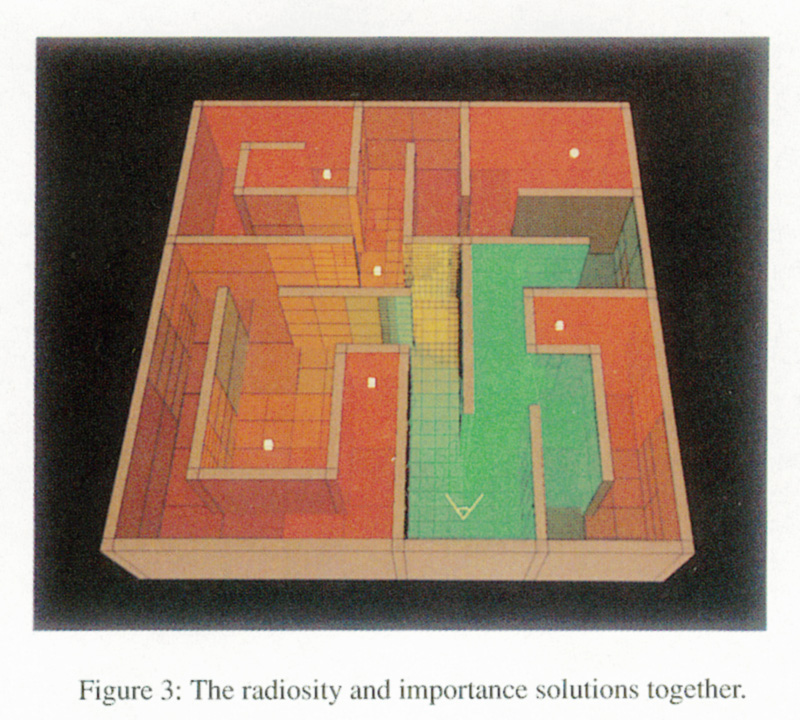|
|
[SAS92]
Cornell University Program of Computer Graphics |
|
||||
An importance-driven radiosity algorithm.Brian E. Smits, James R. Arvo, and David H. Salesin.Computer Graphics (SIGGRAPH '92 Proceedings), 26:273--282, July 1992. We present a new radiosity algorithm for efficiently computing global solutions with respect to a constrained set of views. Radiosities of directly visible surfaces are computed to high accuracy, while those surfaces having only an indirect effect are computed to an accuracy commensurate with their contribution. The algorithm uses an adaptive subdivision scheme that is guided by the interplay between two closely related transport processes: one propagating power from the light sources, and the other propagating importance from the visible surfaces. By simultaneously refining approximate solutions to the dual transport equations, computation is significantly reduced in areas that contribute little to the region of interest. This approach is very effective for complex environments in which only a small fraction is visible at any time. Our statistics show dramatic speedups over the fastest previous radiosity algorithms for diffuse environments with details at a wide range of scales.
This paper is available as a PDF file SAS92.pdf (6.8M).
| ||||||
| ||||||
